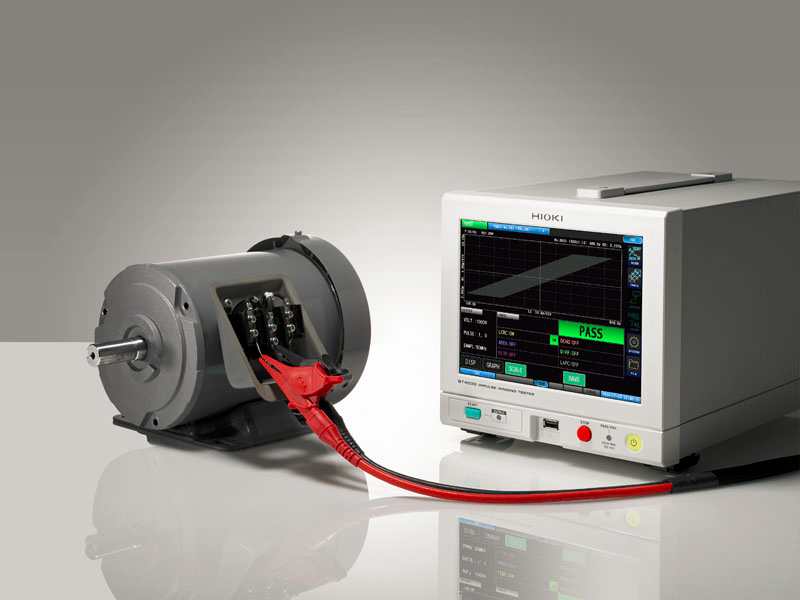 |
 |

Main Menu
Newsletter
News Area
Info Area
Weblinks
Product Focus

Readers Top 5 News of last 30 days
- 27 March 2024 - GPP 5G Conformance Test Solutions with small Footprint
- 03 April 2024 - 5-in-1 Programmable Oscilloscopes
- 05 April 2024 - Oscilloscope Days event in April 2024
- 26 March 2024 - AWG generates up to 20 independent Sine Waves
- 28 March 2024 - RF Test Enclosures provide highly-isolated Bench-top Environments
News - General T&M
Testing Motor Windings by quantifying Response Waveforms
 16 April 2019 - HIOKI launched the Impulse Winding Tester ST4030, the company’s first instrument to provide functionality for testing for defects in motor windings. When the newly launched product is combined with Hioki's existing resistance meter and withstand voltage tester offerings, the company now provides a full line-up of instruments needed to test motor windings on manufacturing lines.
16 April 2019 - HIOKI launched the Impulse Winding Tester ST4030, the company’s first instrument to provide functionality for testing for defects in motor windings. When the newly launched product is combined with Hioki's existing resistance meter and withstand voltage tester offerings, the company now provides a full line-up of instruments needed to test motor windings on manufacturing lines.
The ST4030 uses the new method of response waveform quantification to detect layer shorts (insulation defects) that cannot be detected by the standard approach of comparing area values arising from discrepancies between waveforms. Additionally, the new instrument delivers the performance to detect waveforms with a high degree of precision thanks to 12 MHz sampling and 12-bit resolution, and it can be used with the Discharge Detection Upgrade ST9000 (featuring proprietary HIOKI filtering technology) to detect partial discharges caused by pseudo-shorts.
Impulse winding testers are used to test for layer shorts between windings that occur in components such as motor inductors or coils. Typically, the waveform captured when the impulse voltage is applied to a known-good part (the master waveform) is used as a reference to generate pass/fail judgments by comparing it with a test waveform to gauge any differences in area.
With the move toward electric and self-driving vehicles driving up the quality of parts used in vehicles in recent years, motor windings are subject to increasingly strict reliability requirements. Because defects can lead to serious accidents and failures, manufacturers must guarantee the quality of motors used in vehicles over the long term.
However, it is difficult to detect failures, for example, single-turn faults, that do not appear in waveforms using the typical inspection method of comparing waveform area values. Additionally, there has been increasing demand from manufacturers for the ability to detect minuscule partial discharges that are obscured by noise so that motor deterioration can be diagnosed with a high degree of precision. HIOKI developed the ST4030 to meet these requirements.
www.hioki.com/
Related Articles:

Upcoming Events
More events...
See our Trade Show Calendar
Click here
Tag Cloud
© All about Test 2018
 How to resolve AdBlock issue?
How to resolve AdBlock issue?